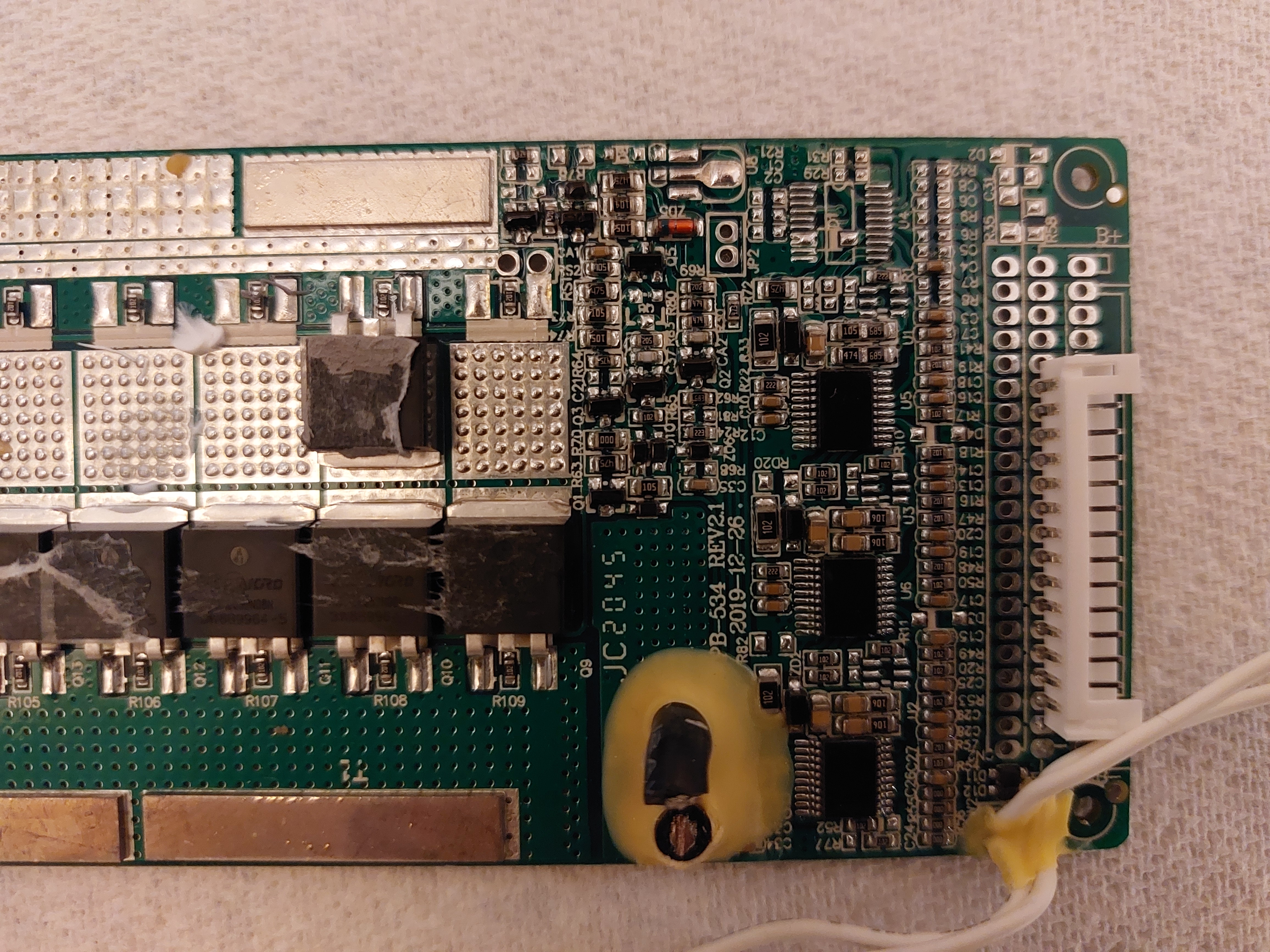MangDav
10 mW
- Joined
- Mar 31, 2022
- Messages
- 27
About 5 months ago while riding, I noticed that my 48v 20ah battery died after 15 minutes of riding when it normally lasts me 2 hours and it would stay off until I plugged in a charger, after some troubleshooting, I noticed that the battery would shut off when the battery voltage sag reached 43.3v. The battery would also not shut off instantly but gradually drop voltage until it wasn't enough for display/controller to stay on. I recorded a video of this issue: https://www.youtube.com/watch?v=_xP2UpDr-Yw
I didn't have time at the time to deal with this and I had spare batteries anyway so I put this battery on the side and fast forward 5 months, I'm trying to diagnose and repair it, keep in mind, I only have basic tools and knowledge regarding ebike batteries so I'm looking for some guidance.
From sitting for 5 months, the battery discharged itself to roughly ~44v so I tried charging it again but the charger would shut off after 2 seconds, the charger is STC-8108LD so I bought another one just incase this one was bad, same model and same issue, only charges for 2 seconds before shutting off so I tested both chargers on working batteries and they charge different batteries just fine so I know it's not the chargers. First thing I tried was changing the BMS, the BMS that the battery had was a dual port so I replaced it with a dual port and same charging issue, I tried a different model of a 54.6v charger and it does charge the battery, I left it for a minute without an issue and the battery pack voltage did go up by 0.8v, not sure if this charger doesn't have some protection inside that causes the STC-8108LD to detect a problem with the battery and stop charging. At this point I was confused and this was getting out of my knowledge area, I did read somewhere that when a battery gradually shuts off like mine did, it could mean bad cells or bad bank of cells so I tested the series voltages at the BMS connector and these are the resaults with differences worked out for convenience:
1: 2.97v
2: 2.66v
3: 3.49v
4: 3.76v
5: 3.66v
6: 2.84v
7: 4.00v
8: 4.07v
9: 3.96v
10: 4.04v
11: 4.01v
12: 4.04v
13: 3.90v
Lowest is 2.66v and highest is 4.07v which is a big difference. I'm not sure where to go from here, should I try charging the battery with the charger that doesn't shut off and see if these cell banks will level off or would be safer and smarter to charge up the lower voltage banks to roughly 4v so they match the highest bank and see if the battery will continue shutting off at 43.3v? Even if that fixes it, could a bad BMS that stopped balancing cells cause this? But then why the new BMS isn't balancing the cells? Not sure if it helps but the cells inside this battery are: SINC ISR18650 3.7v 2600mAh cells. Thanks for any input!
I didn't have time at the time to deal with this and I had spare batteries anyway so I put this battery on the side and fast forward 5 months, I'm trying to diagnose and repair it, keep in mind, I only have basic tools and knowledge regarding ebike batteries so I'm looking for some guidance.
From sitting for 5 months, the battery discharged itself to roughly ~44v so I tried charging it again but the charger would shut off after 2 seconds, the charger is STC-8108LD so I bought another one just incase this one was bad, same model and same issue, only charges for 2 seconds before shutting off so I tested both chargers on working batteries and they charge different batteries just fine so I know it's not the chargers. First thing I tried was changing the BMS, the BMS that the battery had was a dual port so I replaced it with a dual port and same charging issue, I tried a different model of a 54.6v charger and it does charge the battery, I left it for a minute without an issue and the battery pack voltage did go up by 0.8v, not sure if this charger doesn't have some protection inside that causes the STC-8108LD to detect a problem with the battery and stop charging. At this point I was confused and this was getting out of my knowledge area, I did read somewhere that when a battery gradually shuts off like mine did, it could mean bad cells or bad bank of cells so I tested the series voltages at the BMS connector and these are the resaults with differences worked out for convenience:
1: 2.97v
2: 2.66v
3: 3.49v
4: 3.76v
5: 3.66v
6: 2.84v
7: 4.00v
8: 4.07v
9: 3.96v
10: 4.04v
11: 4.01v
12: 4.04v
13: 3.90v
Lowest is 2.66v and highest is 4.07v which is a big difference. I'm not sure where to go from here, should I try charging the battery with the charger that doesn't shut off and see if these cell banks will level off or would be safer and smarter to charge up the lower voltage banks to roughly 4v so they match the highest bank and see if the battery will continue shutting off at 43.3v? Even if that fixes it, could a bad BMS that stopped balancing cells cause this? But then why the new BMS isn't balancing the cells? Not sure if it helps but the cells inside this battery are: SINC ISR18650 3.7v 2600mAh cells. Thanks for any input!



